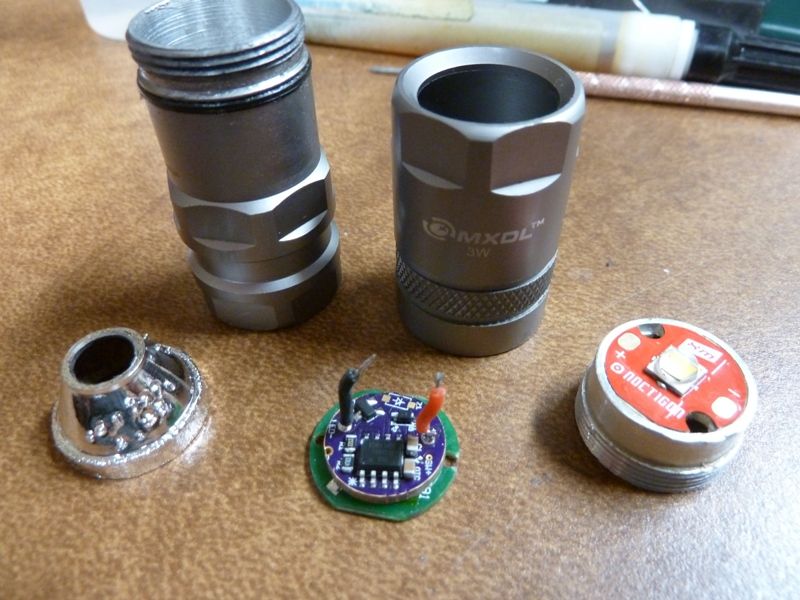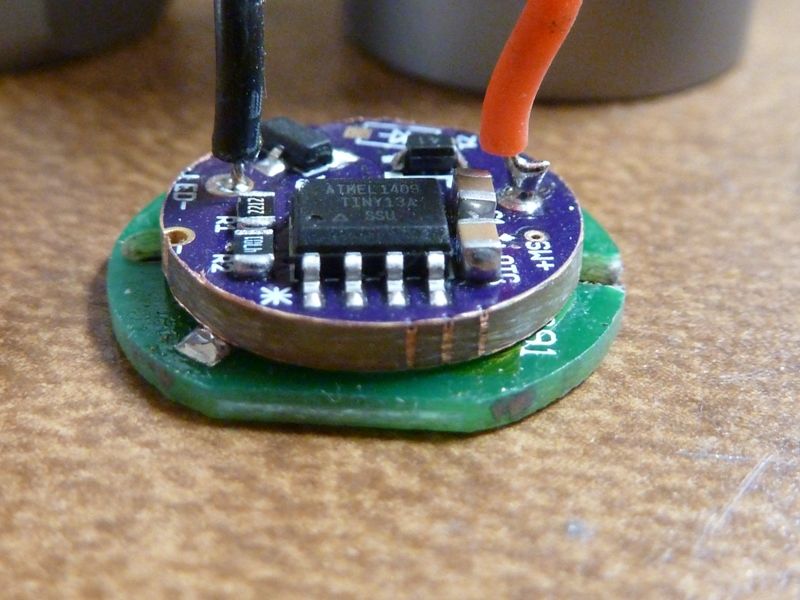STEP 1: teardown/measuring



H1 + H2 is 0.464".

H1 +H2 +H3 is 0.743".

These digital things are so awesome. So you can do it the hard way, measuring and writing stuff down and then using a calculator, or just use the zero button.

Measure to point A, zero, measure to point B, and the display is the difference between just those two points. No calculator or scratch pad required.
Dimension of H3 is 0.280", this will need to be filled with an aluminum plug later.

Here's that zero button at work again. Measure the part you don't want included, hit zero...

...and you get the measurement of the parts you want, with the part you don't want left out.

So, the stuff that has to fit inside is 0.484", but the distance down to the bottom of H2 is only 0.464". If you put it together as-is, you get this:

There's another problem that shows up when you check the IDs.

D1 (at H2) is 0.839".

D2 (at H3) is 0.661".

But the 3XP board is 0.790".

That means there's nothing to center the MCPCB with the bezel opening, since it can flop around by 0.040" in whichever direction it feels like.
To make it all fit together properly, I'm going to: Press in an aluminum plug sized 0.662" x 0.280", face the top surface of the plug down to a depth of 0.480", and a diameter of 0.792". That will put the bezel around 0.003" from bottoming against the front of the head when gronked down really really tight, and center the MCPCB well enough but without any chance of binding against the sides and not making good contact with the plug.
Coming up next: I BOUGHT A LATHE!
--------------------
Non-off-topic posts:
Post #8: Mounting the head in the lathe chuck
Post #13: Making the press-fit plug/spacer
Post #12: Adjusting for zero runout, machining the shelf
Post #66: Cutting threads for the screw-in tailcap plug conversion
Post #70: Making the new threaded brass tail plug




















